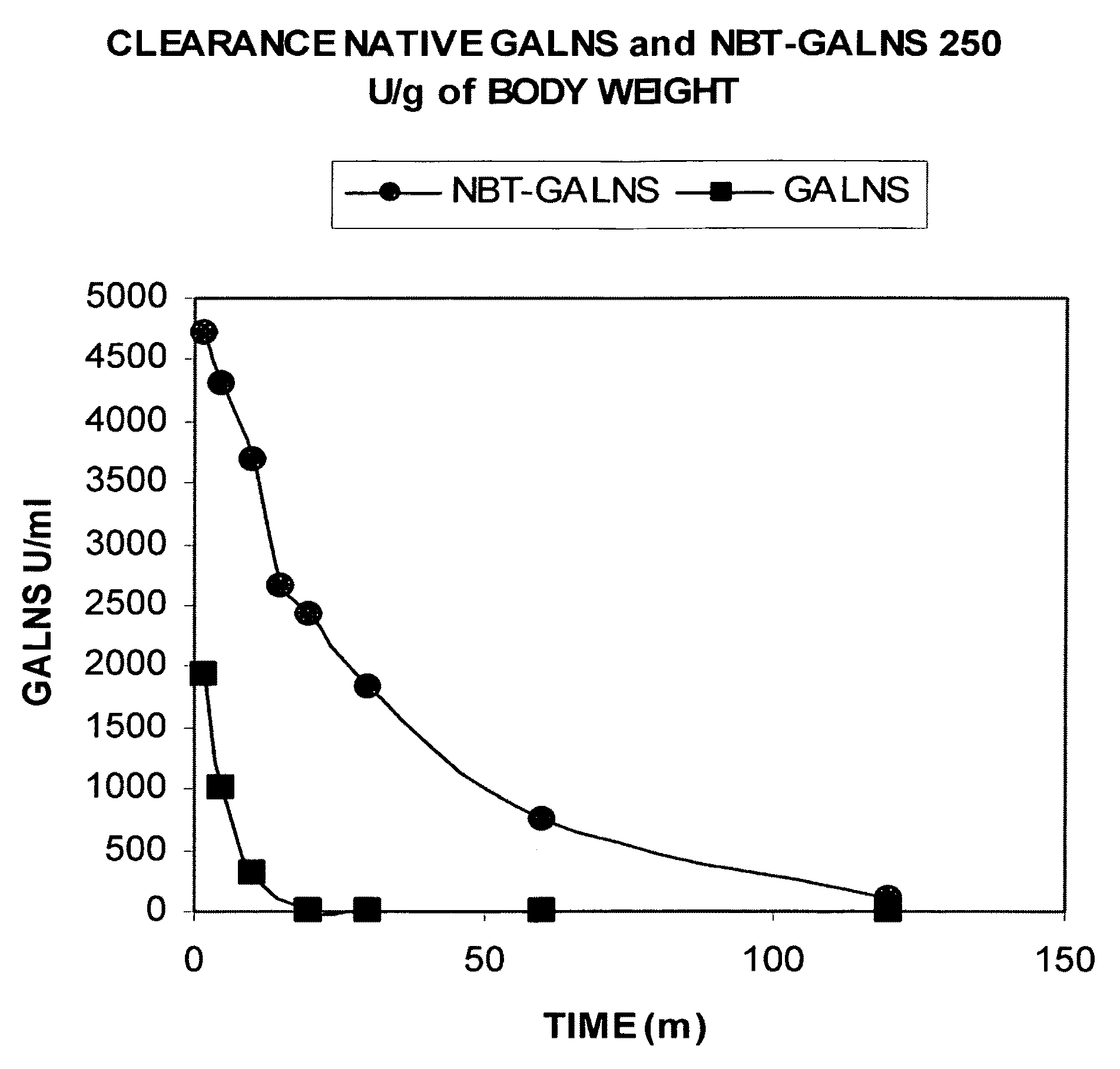Proteins with an attached short peptide of acidic amino acids
a short peptide, acidic amino acid technology, applied in the direction of peptide/protein ingredients, drug compositions, cardiovascular disorders, etc., can solve the problems of unstable physiologically active proteins such as enzymes and peptide hormones, which undergo relatively rapid inactivation, and no effective remedy is currently available, so as to enhance the targeting ability of bone tissues and increase blood stability
- Summary
- Abstract
- Description
- Claims
- Application Information
AI Technical Summary
Benefits of technology
Problems solved by technology
Method used
Image
Examples
examples
[Method for Construction of Expression Vector]
[0049]Vector pCXN had been constructed in accordance with a literature (7) and was offered to us by Prof. Miyazaki at Osaka University. An expression vector for native human GALNS, pCXN-GALNS, was one that had been reported by Tomatsu et al. in 1991 (8). An expression vector for human GALNS to the N-terminus of which is attached (via a linker peptide) a short peptide (N-terminal bone tag: NBT) consisting of acidic amino acids (NBT-GALNS) was constructed starting with pCXN-GALNS in the following manner. FIGS. 2 and 3 schematically illustrate the process for construction.
[0050]By cleaving pCXN-GALNS with EcoRI, human GALNS cDNA was recovered. Using this as a template, PCR was carried out using LA-Taq (Takara) to amplify Δsig GALNS cDNA (nt 79-1569 in SEQ ID NO:1, which is the sequence left after removal of nt 1-78 corresponding to the secretion signal from the ORF region.) to the 5′-terminus of which is attached an AgeI cleavage sequence. ...
PUM
| Property | Measurement | Unit |
|---|---|---|
| concentration | aaaaa | aaaaa |
| bed volume | aaaaa | aaaaa |
| flow rate | aaaaa | aaaaa |
Abstract
Description
Claims
Application Information
 Login to View More
Login to View More - R&D
- Intellectual Property
- Life Sciences
- Materials
- Tech Scout
- Unparalleled Data Quality
- Higher Quality Content
- 60% Fewer Hallucinations
Browse by: Latest US Patents, China's latest patents, Technical Efficacy Thesaurus, Application Domain, Technology Topic, Popular Technical Reports.
© 2025 PatSnap. All rights reserved.Legal|Privacy policy|Modern Slavery Act Transparency Statement|Sitemap|About US| Contact US: help@patsnap.com



